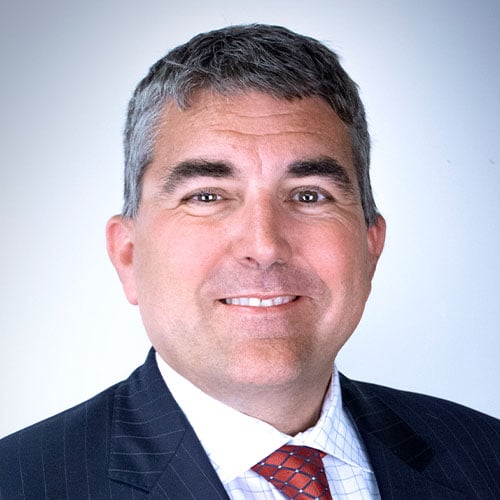This is the third part of a six-part series focused on planning and implementing a successful succession strategy. The series focuses on a business-owning couple—William, 63 and Susan, 60—along with their three children: Nancy, 28; John, 25 and Amanda, 20.
While this family is fictionalized, its members represent the clients and issues I have worked with extensively over the course of the last two decades.
The first part told William and Susan’s origin story. The second focused on building a governance plan that insures the right people are making the right business decisions.
Now this third part zeroes in on William and Susan’s financial plan—and the business’ role in it.
Understanding The Planning Process
In part two, we began by talking about the business’ importance in William and Susan’s plan. So just what is a financial plan? As briefly highlighted in the first two parts of this succession series, a financial plan is an analysis designed to align a person’s resources with what makes them happy.
The planning process starts with defining what and who William and Susan care about—what we at JFG call “uncovering and capturing their story.” Why is story important? Because William and Susan are human beings, and their resources, like money and time, are not used to simply “have more” but rather to have more of what they care about.
William and Susan are not real-life embodiments of Scrooge McDuck, rolling around in copious amounts of gluttonous cash. They have wealth for a reason; a reason that makes them happy. And their advisors need to first understand, for William and Susan specifically, what that “why” is. Why is wealth important to them?
Statement of Financial Purpose
At JFG, we call that “why” their financial purpose, and that purpose, once uncovered and documented, will inform their financial decisions going forward. Until William and Susan truly understand, and then use, that financial purpose, they are like Alice when she meets the Cheshire Cat, taking any road to get to nowhere in particular.
William and Susan’s financial purpose will be personal to them and could include values such as independence, legacy, family and philanthropy. If William and Susan struggle with defining financial purpose, a good starting point is looking at three things: their bank account, their charge card statements and their calendar. How they spend their time and money is a pretty good clue to what they value (or a wonderful mirror to show them a misalignment between their values and their financial decisions).
Crafting Compelling Goals
Once we have captured their financial purpose, William and Susan’s advisor would help them build some tangible goals. If financial purpose is their “why,” their goals are their “hows.”
For example, if what makes them happy is spending time in meaningful locations with family, their goals could outline two multi-generational family trips that fulfill that purpose. Or if what is meaningful to them is successful stewardship of Jackson Machining, their goals could focus on business reinvestment and next generation professional development.
All of their goals should require the allocation of resources. Some will take money (family vacations), some will take time (more volunteer work on causes that matter; more time developing next generation leaders) and some will require both.
The Mirror
Once we have compelling and aligned financial purpose and goals, the next step is for William and Susan’s advisor to build what we at JFG call the “mirror plan.” Its purpose is to show William and Susan their current economic behaviors and the likely consequences from them.
To prepare the mirror plan, the advisor gathers information from William and Susan including their assets, liabilities, incoming and outgoing cash flows, tax returns, asset locations and estate planning documents. The mirror then shows (1) whether their goals are likely to be met under their current behaviors, (2) the risks to their goals based on the “inefficiencies” of their current plan and structure, and (3) whether they should be dreaming smaller or bigger.
Let’s look at these three topics a bit further:
- First, the mirror will show whether, based on their behaviors and our assumptions, they are on track, ahead of or behind their goals. Are William and Susan oversaving or overspending? Are they comfortable with the assumptions in the plan? Are the behaviors that make the plan “work” in alignment with their happiness? All of these questions will be addressed in the mirror plan.
- Second, it is not uncommon when running the mirror plan that we uncover inefficiencies with the current structure. For example, we might learn the current plan results in too much income or estate tax. Or we might learn that current asset location results in undue creditor risk. The current plan might lessen the philanthropic impact that could be achieved with a different charitable structure.
- Finally, one of the understated gifts of the mirror plan is that it often removes the shackles of smaller-than-possible purpose and goals. It is not uncommon for clients like William and Susan to learn that their current goals consume a very small percentage of their resources. William and Susan then have the freedom to dream bigger: to impact more people, to make a deeper impact on the same people or both.
Scenario Construction: What If?
Once the advisor, William and Susan have had a chance to dig into, and pull apart, the mirror plan, William and Susan can begin the process of putting together a better plan. A plan that better meets their purpose, a plan that better accomplishes their goals, a plan that utilizes better asset location, a plan that better makes more impact, a plan that dreams bigger or all of those.
The way this is done is through making changes in the mirror. For example, if better asset location would lead to less taxes and more goals, the plan is rerun using this asset location. Or if the plan allows William and Susan to dream bigger, the plan is rerun with these bigger goals.
This type of “scenario planning” is a familiar step in building any strategy. We collectively imagine the possible, price it and determine if the possible becomes the doable. If it does, it becomes a part of the plan. Eventually, William, Susan and their team agree to a final plan, containing behaviors, assumptions, and goals that best accomplish their financial purpose and, therefore, maximize their happiness.
The Role of the Business in the Plan
Up until this point, we have not talked much, if at all, about the role of Jackson Machining in William and Susan’s financial plan. What is that role? Jackson could have many roles in the plan.
First, if a plan focuses on aligning resources with purpose, Jackson provides William and Susan with resources. William’s compensation is income. If William is receiving annual profit distributions from Jackson, those flows are income. Jackson’s value is also an asset on William and Susan’s personal balance sheet.
More subtly, another of William and Susan’s resources is their time. Part of the planning a good advisor will do is helping William and Susan determine whether the time William spends at Jackson aligns with their financial purpose. For example, if William and Susan’s financial purpose statement focuses on time spent with family, and William spends every waking hour at Jackson, then his resources are misaligned with their purpose. A good advisor helps clients focus on all their resources, not just financial ones.
Jackson can have additional influence on the plan. For example, Jackson’s success can be a centerpiece of William and Susan’s financial purpose. It is a common pillar of a business owner’s financial purpose statement to be a good family steward, growing the business for the next generation. That would change Jackson’s success from a resource (a means to financial purpose) to a goal itself (an end of financial purpose).
Also, Jackson could have a role in the professional growth of people William and Susan care about, including their children. Jackson’s employees could be a focal point of their financial purpose, with William and Susan being willing to extract less value for Jackson to protect and/or compensate its employees.
Whether Jackson’s role in William and Susan’s plan is as a resource, as an integral part of financial purpose or both will have a material impact on their plan.
- For example, if William and Susan’s financial purpose focuses on giving Jackson to their children in twenty years, the value of Jackson cannot at that time be used as a resource in their plan.
- Or, if Jackson is worth $4,000,000 but William and Susan’s financial purpose is met by selling the business for $2,500,000 to key Jackson employees, the plan needs to be built on that lower number.
- Finally, all the governance factors we discussed in part two of this series come into play in the financial plan. For example, if Jackson accounts for $1,000,000 of annual income to William and Susan, but there is a strong risk that number would be reduced by 75% if William was unable to make critical decisions, a “post-William” financial plan for Susan must use an income number of $250,000 instead of $1,000,000 (which again highlights the economic importance of the factors in the previous section).
Executing and Revising the Plan
Finally, once the plan is complete, we need to have a plan of execution. The planning William and Susan’s advisor does with them will reveal some opportunities for better results, such as changing the location of assets, tax-advantaged transfers, different behaviors and different choices. At JFG, those opportunities result in a “stop/start/continue” plan. For this plan to work as agreed upon, we need to document:
- What we need to start doing that we are not doing now
- What we are doing that we need to stop doing
- What we need to continue doing
That plan assigns duties and accountabilities, not only for the advisor and the clients but also for outside advisors. For example, if William and Susan should give 60% of the Jackson shares to irrevocable trusts, the plan assigns steps to make that happen, including drafting trusts, new legal governance documents and tax notifications. Or if the plan is at risk due to William not having a solid successor, the advisor could build in a short-term solution (insurance to replace William’s income and protect family asset value) and a longer-term plan (developing internal business level decision makers).
Finally, at JFG, we analogize our role to that of a sherpa with the plan acting as a GPS. This is distinct from many of our competitors who view their plans like maps: a never-changing path that William and Susan can follow to reach their destination.
In fact, some other advisors charge a one-time fee to create a financial plan, insinuating that the plan itself is a valuable asset for William and Susan. But that is not what a financial plan is. It is a current best guess based on everyone’s current thinking. And everyone—William, Susan and their advice team—needs to understand what the plan also is…wrong. Things change. Markets change, value changes, values change, goals change, people change.
The plan needs to adapt to these changes, and their advisors, like sherpas, need to get William and Susan successfully and safely up their personal mountain.
Conclusion
Once the financial plan is created, we need to begin executing on its guidance. One of the key areas of execution is to understand what legacy means to William and Susan: how does the plan ensure William and Susan’s story is told after they are no longer here? In part four we will explore how we build an estate plan to help tell that story.
ABOUT THE AUTHOR

SVP Director Wealth Strategy JD, CPA | Johnson Financial Group
Joe has extensive experience helping high‐net worth individuals, family offices, business owners and corporate executives meet their wealth and legacy goals. His areas of specific interest and skill include business succession planning, financial and estate planning, and wealth transfer strategies.






